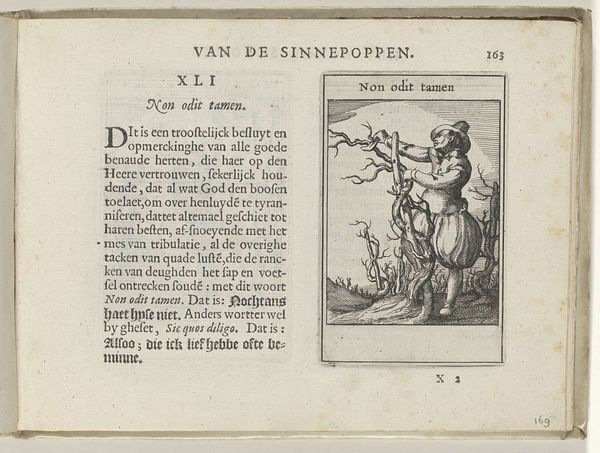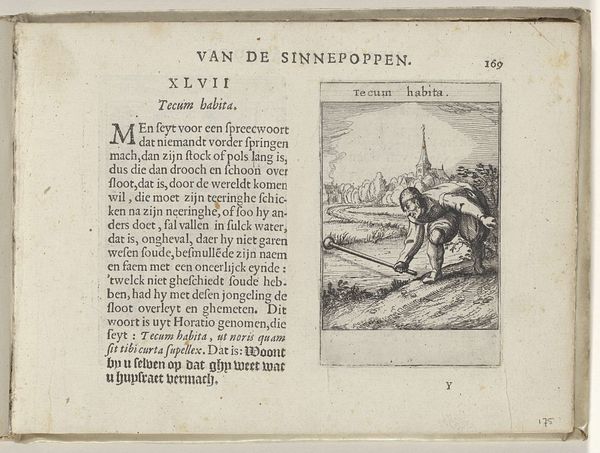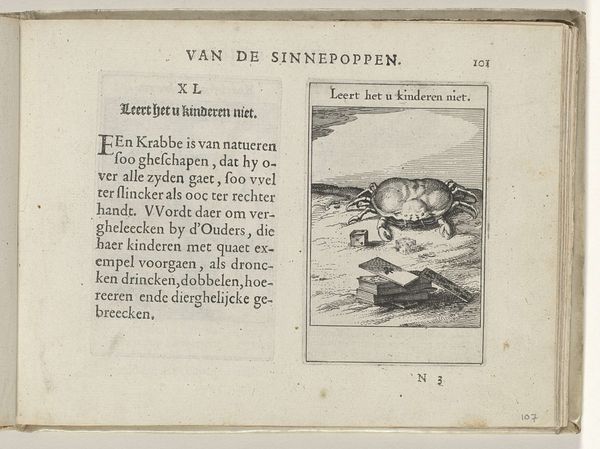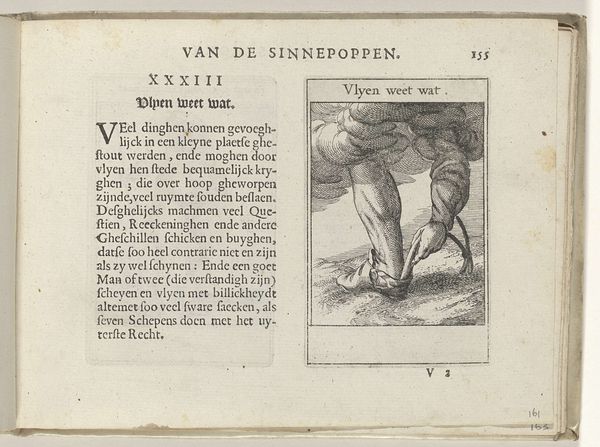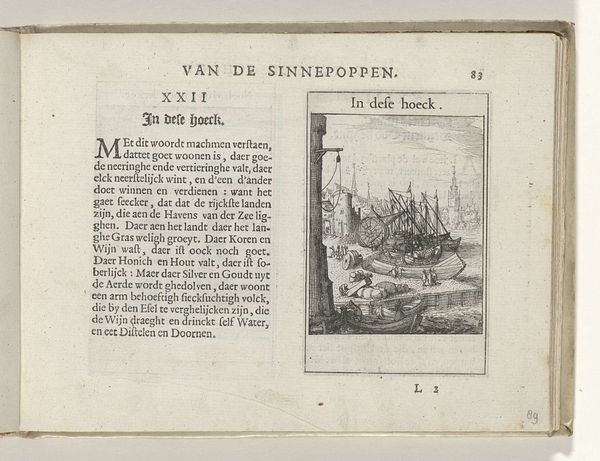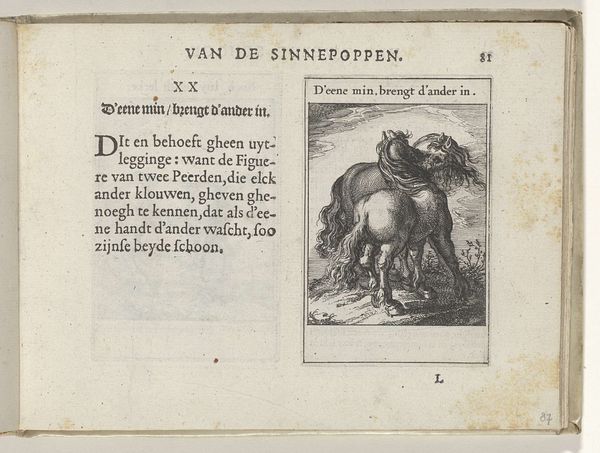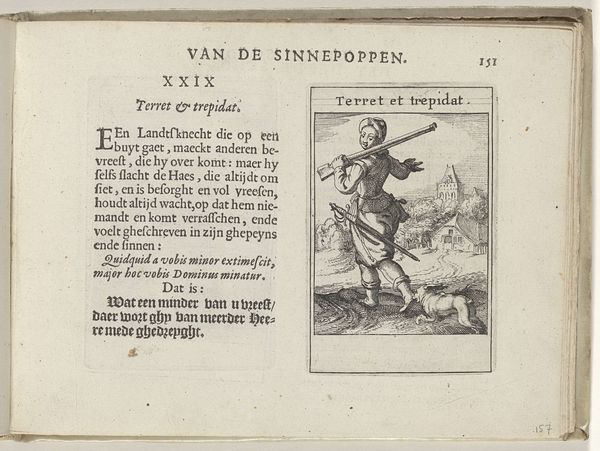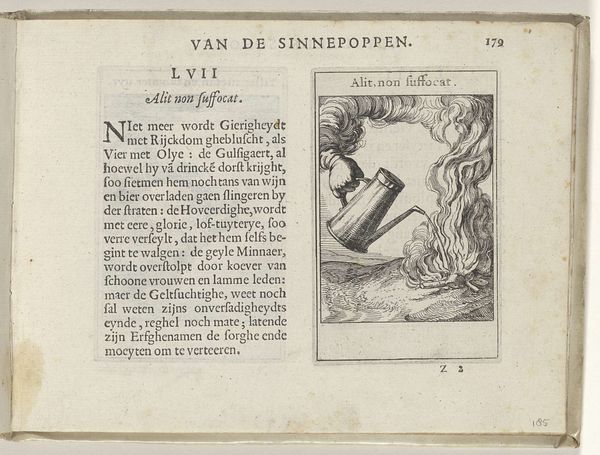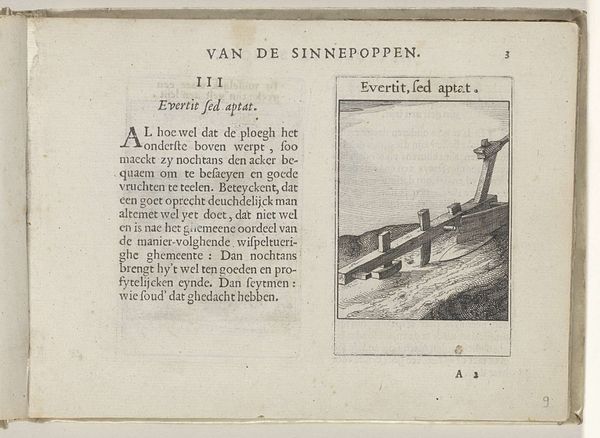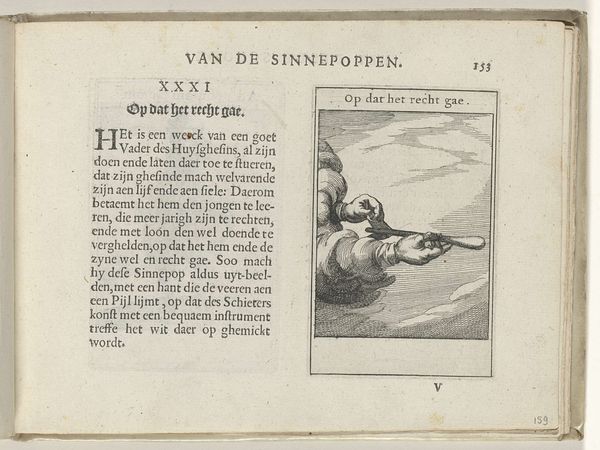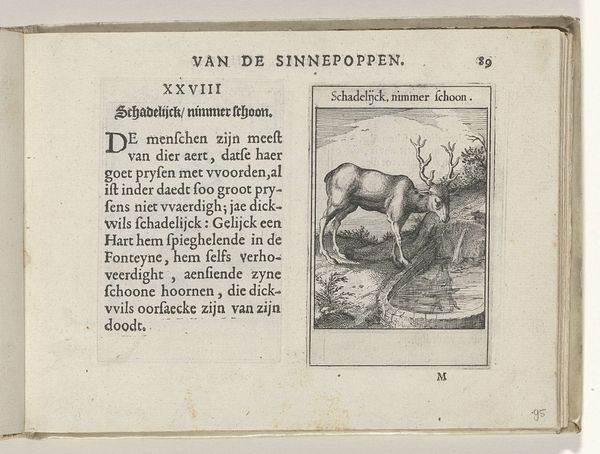
print, engraving
#
aged paper
#
toned paper
#
homemade paper
#
narrative-art
#
dutch-golden-age
# print
#
sketch book
#
hand drawn type
#
personal sketchbook
#
journal
#
sketchbook drawing
#
genre-painting
#
storyboard and sketchbook work
#
sketchbook art
#
engraving
Dimensions: height 137 mm, width 188 mm, height 95 mm, width 60 mm
Copyright: Rijks Museum: Open Domain
Curator: Today we are looking at “XLVIII Oorboor gheen straf,” an engraving from 1614 by Roemer Visscher, housed in the Rijksmuseum. Editor: Well, immediately I'm struck by the plainness of it, the sketch-like quality of the engraving. The texture of the paper gives it a homely feel. It looks like a craftsman's manual open on the workbench. Curator: Indeed, the material is integral here. Look closely at the detail, at how the textures are conveyed by lines alone. Note also the framing of the engraving, contrasted to the bordering of the text. Consider how these lines dictate a separation in the use of negative space to add dimensionality. Editor: Yes, I see that, it’s the image of a tool – presumably for flax production based on the nearby text – depicted rather straightforwardly. But I wonder about the audience and its production. This wasn’t a luxury object; it’s made to be disseminated widely. It almost resembles a printed broadside or a page torn from a sketchbook. Curator: Precisely. Visscher, despite being more recognized for emblems and moral themes, provides us here with something closer to an instruction. He emphasizes, through this relatively simple composition, clarity and utility of meaning. Semiotic simplicity if you will. Editor: Absolutely, this clarity extends to its possible socio-economic purpose. The text around it speaks of using tools to break flax and not for revenge or hate. Is there a social commentary woven in here concerning labor practices and ethical considerations during that time? The way the lines seem functional emphasizes how tools serve a vital social purpose, or should, at least. Curator: An intriguing thought, yes, how such basic form is itself freighted by purpose, design speaking directly to intent. I concur! Editor: I walk away thinking of how the artist, Visscher, as a creator of images and perhaps societal narratives, sees himself using tools responsibly. Curator: And I am reminded again of how clean design directs even the most seemingly mundane aspects to a powerful form of structural coherence.
Comments
No comments
Be the first to comment and join the conversation on the ultimate creative platform.
